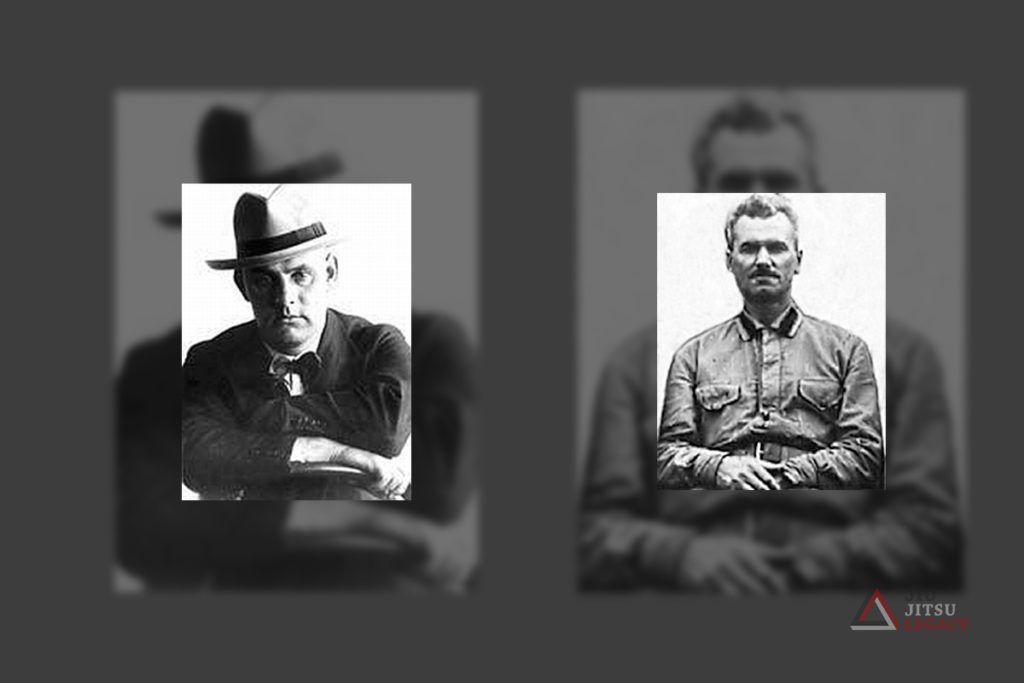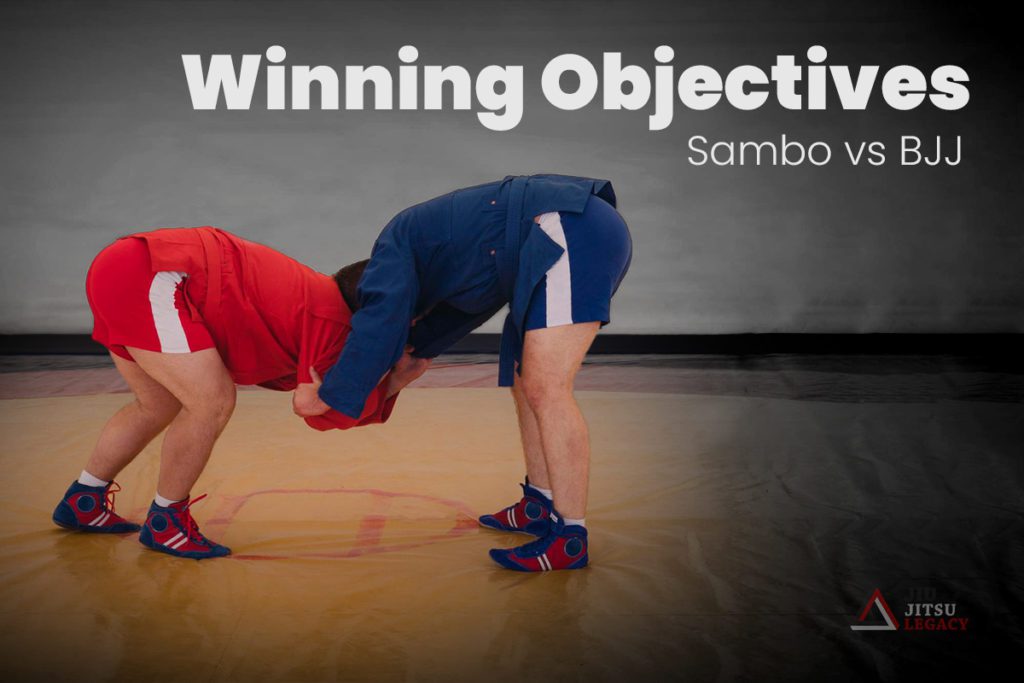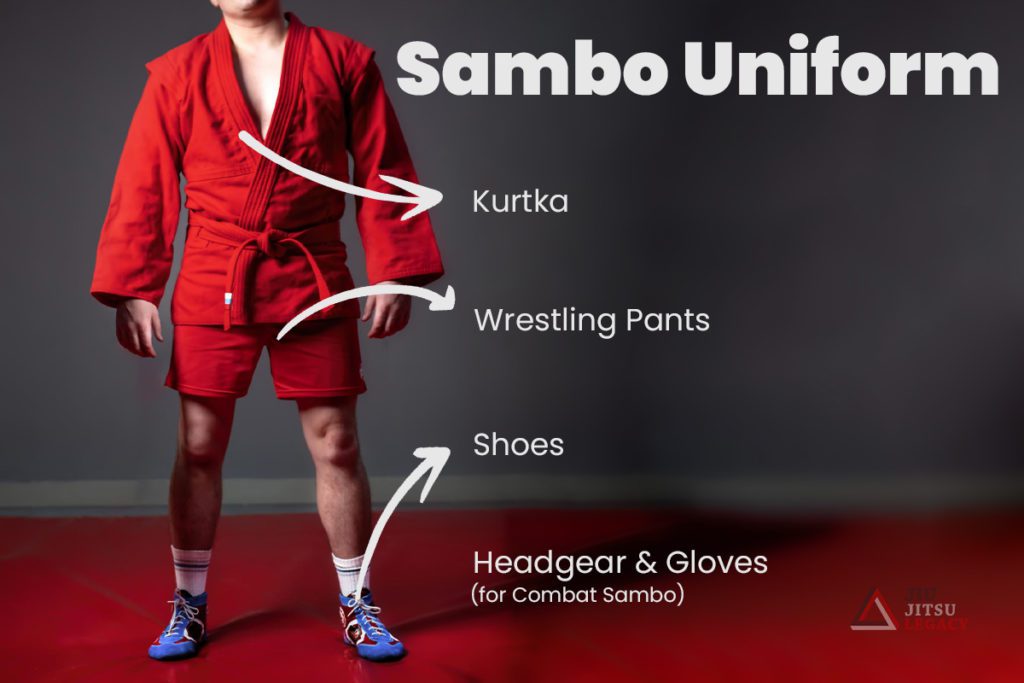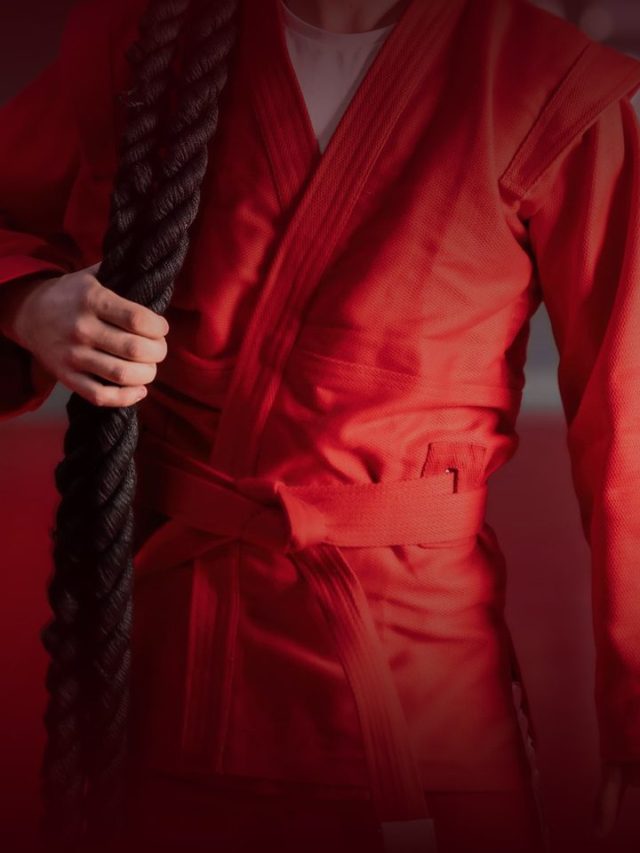If you are a UFC fan then no doubt you’ve heard of the lightweight legend Khabib Nurmagomenov. You might even have seen him wearing the shirt “If Sambo was easy, then it would be called Jiu Jitsu.” But is that true? What even is Sambo? If you live in the United States you probably don’t even know someone who trains Sambo or a gym that offers it!
This article will have everything you need to know to get up to speed on Sambo and how it stacks up to Brazilian Jiu Jitsu.
What is Sambo?
Sambo (also spelled Sombo) is a Russian based grappling martial art that closely resembles Judo and Wrestling. Sambo is an acronym, it is short for the Russian phrase: samozashchita bez oruzhiya, which means “self-defense without a weapon.” As an acronym, the word is occasionally seen written in all caps: SAMBO.
Although it was originally designed for the military, today it is mostly practiced as a sport and has a huge presence in MMA. The techniques in Sambo are explosive, and often involve big hip throws, leg locks, and wrestling shots. Competitors in Sambo wear protective wrestling headgear, mat shoes (similar, but different than wrestling shoes), and often do strength training.
History of Sambo
The history of Sambo is a little complicated because of the collapse of the Soviet Union and because one of the founders of Sambo died in a Russian gulag during one of Stalin’s Great Purge. However, Scott Sonnon’s book Mastering Sambo for Mixed Martial Arts does a great job of summarizing the style’s history.
There are three people credited with the development of Sambo. The first founder, Vasili Oshchepkov, is famous for being the first Russian to receive a black belt from Jigoro Kano, the founder of Judo. On his return to Russia, Oshchepkov taught Judo to the Soviet army.
With the help of the second founder, Viktor Spiridonov, Sambo became a fusion of many local Russian wrestling styles and Judo. Unfortunately, Oshchepkiv was eventually (falsely) accused of being a Japanese spy because of the time he spent training in Japan. He was sent to a Russian gulag and executed.

Source: Wikipedia
While Oshchepkov and Spiridonov are largely responsible for many of the early techniques in Sambo, Anatoly Kharlampiev is given the title of the “father of Sambo”. Kharlampiev gets this recognition because he got the USSR to accept Sambo as the nation’s official combat sport.
Sambo Today
Today Sambo has reached a new level of fame that it hasn’t seen before in its history. This is largely because of Khabib Nurmagomedov the undefeated lightweight champ in the UFC. (29-0-0) Khabib is famous for his takedowns, and his dominant presence on the ground. Many of his takedowns are Sambo based.
Arguably, Sambo’s effectiveness is what propelled Khabib to glory, as before Khabib was a UFC champion he was a Sambo champion. Sambo currently enjoys a large competition scene, with the next world championship being held on August 27th, 2022 in Israel.
Types of Sambo (and how they differ from Jiu Jitsu)
Sambo break its competitions down into different distinct styles:
- Self Defense
Literally translated, Sambo means self-defense without a weapon. So it should come as no surprise that the first part of Sambo is based around self-defense. This kind of Sambo doesn’t only include Judo, but also kickboxing.
- Sport Wrestling
To a Jiu Jitsu athlete, sport Sambo might seem like a daunting endeavor. The big main difference is that sport Sambo prohibits chokeholds. However, it allows leg locks and teaches many entrances to them from takedowns, even early in a competitor’s career.
- Combat Sambo (MMA)
This branch of Sambo is developed specifically for fighting people with other martial arts backgrounds. The way it’s different from sport Sambo is that they will teach fighters not to expose their neck (once again because chokes are illegal in sport Sambo).
- SPETSNAZ COMBAT (SYSTEMA)
This is Sambo that is taught to the Russian Military. This kind of Sambo is taught to the Spetsnaz, and is sometimes referred to as “Systema,” because it’s a “system” of survival.
(However, don’t confuse it with the other Russian “Systema” martial art, which is completely different.)
There are also even smaller branches of Sambo like beach Sambo, which is Sambo that is done on a beach!
Sambo vs BJJ – Similarities and Differences
As stated above, one of the biggest differences between BJJ and Sambo is that Sambo practitioners will learn leg locks very early, and will go for them in competitions, often right off a takedown. BJJ on the other hand allows chokeholds, and generally saves leglocks for more advanced students. Chokeholds in Sambo are reserved for combat Sambo.
Sambo practitioners are also not allowed to ever fully close the guard. In Sambo this is seen as stalling. However, in Brazilian Jiu Jitsu, this is a very popular position, and the closed guard is often the very first thing a new student learns.
Winning Objectives / Rules

Sambo matches are often much more explosive than BJJ matches. Sambo practitioners win by getting a dominant throw, submission, or points. However, because the closed guard isn’t allowed, many matches end after the initial takedown or throw. Sambo practitioners love to dive on submissions, and will even sacrifice positions for them.
Because there are many different types of Sambo, Sambo competitions employ a wide variety of rulesets. For example, some Sambo competitions have kickboxing, while others don’t.
Uniform and Ranking
The uniform and ranking for Sambo and Jiu Jitsu are very different. First and foremost, the uniform Sambo practitioners wear is called a Kurtka. While it looks similar to a kimono worn by a BJJ practitioner, it’s actually baggy like a Judo gi. It also has belt loops on it to keep the belt in place during throws and grappling.
The most noticeable difference between a BJJ Gi and a Sambo Kurtka is that Sambo practitioners don’t wear any gi pants. Instead, they wear wrestling pants and shoes. Sambo practitioners might also wear headgear, and gloves if they are doing combat Sambo.

Another key difference between Sambo practitioners and BJJ practitioners is that Sambo doesn’t use the traditional martial arts belt ranking system. Instead, they use a rating system that measures how much someone competes and what fair matches would be.
FAQs
What does Sambo mean?
Sambo is an acronym for samozashchita bez oruzhiya which literally translates to self-defense without a weapon.
How do you win in Sambo?
You win a competition in Sambo by having the most points at the end of a match, however, you can also win by securing a submission.
When was Sambo founded?
Sambo was developed in the 1920s and accepted as the official combat sport of the USSR in 1938.
Conclusion
Sambo is an explosive and highly effective grappling art. It also teaches takedowns and leg locks. To be fair, recently BJJ has come under fire for not putting as much emphasis on takedowns, but the sport is making progress in that respect. Still, BJJ practitioners could take a lot from Sambo as far as leg locks and takedowns go.
However, BJJ also teaches closed guard and many more choke hold positions and submissions. Ultimately the best martial art is the one you will train consistently.

Jack is a D who holds a bachelors degree in English Literature. He enjoys traveling, reading, and the Bow and Arrow choke. One day he hopes to teach English overseas and become a published author.

